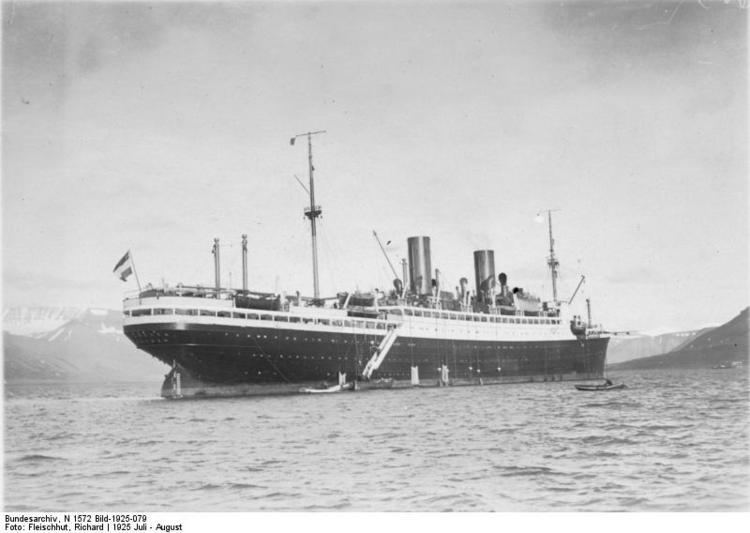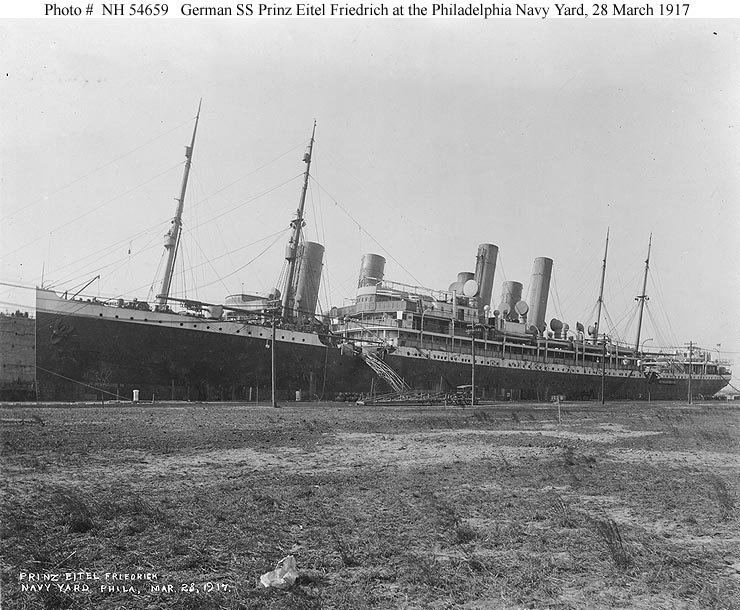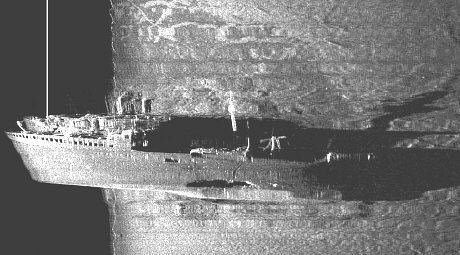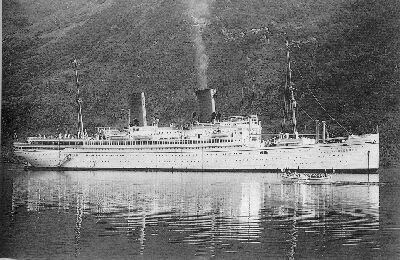Maiden voyage 23 June 1923 Out of service 10 February 1945 Fate Sunk 10 February 1945 Launched 1922 Beam 20 m | In service 23 June 1923 Renamed 1930 Status wreck Length 168 m Capacity 793 | |
 | ||
Builders AG Vulcan Stettin, Germany | ||
SS General von Steuben was a German passenger liner and later an armed transport in the Kriegsmarine of Nazi Germany that was sunk during World War II. She was launched as München (sometimes spelled Muenchen), renamed in 1930 as General von Steuben (after the famous German officer of the American Revolutionary War), and renamed again in 1938 as Steuben.
Contents
- SS General von Steuben Scan
- Early History
- 1930 fire and sinking
- World War II
- Operation Hannibal
- Final Voyage
- Wreck
- References

During World War II, she served as a troop accommodation ship, and since 1944 as an armed transport. On 10 February 1945 the ship was torpedoed by the Soviet submarine S-13 during Operation Hannibal and sunk. There were some 4000 deaths.

SS General von Steuben - Scan
Early History

In 1923, München was the first German trans-Atlantic passenger liner both to be launched, and to enter New York Harbor, since the end of World War I. She arrived in July 1923 on her maiden trans-Atlantic voyage.
1930 fire and sinking

On 11 February 1930, after docking and discharging passengers and most of her crew from a voyage from Bremen, Germany, a fire broke out in a paint locker which quickly spread to another storage hold; the massive fire and explosion resulting in a five-alarm fire with all fire equipment in New York City being sent to the burning ship. The fire could not be controlled and it sank next to the wharf it had docked at.

In one of the largest shipping salvage efforts of its time, München was raised, towed to a dry dock, repaired, and returned to service. Shortly afterwards, the ship's owner renamed her General von Steuben.
World War II

She was commissioned in 1939 as a Kriegsmarine accommodation ship. In 1944, she was pressed into service as an armed transport ship, taking German troops to eastern Baltic ports and returning wounded troops to Kiel.
Operation Hannibal
Along with the Wilhelm Gustloff and many other vessels, she was part of the largest evacuation by sea in modern times. This evacuation surpassed the British retreat at Dunkirk in both the size of the operation and the number of people evacuated.
By early January 1945, Grossadmiral Karl Dönitz realized that Germany was soon to be defeated. Wishing to save his submariners, he radioed a coded message on 23 January 1945 to the Baltic Sea port Gotenhafen (the Polish city and port of Gdynia under German occupation) to evacuate to the West under the code name Operation Hannibal.
Submariners were then schooled and housed in ships lying in the Baltic ports, with most of them at Gotenhafen. Among them were Deutschland, Hamburg, Hansa, and Wilhelm Gustloff.
Notwithstanding the losses suffered during the operation, the fact remains that over two million people were evacuated ahead of the Red Army's advance into East Prussia and Danzig (now Gdańsk, Poland).
In the winter of 1945, East Prussian refugees headed west, away from the city of Königsberg and ahead of the Soviet advance into the Baltic States and East Prussia. Thousands fled to the Baltic seaport at Pillau (now Baltiysk, Russia), hoping to board ships that would carry them to the relative safety of Western Germany. Steuben was in the fleet of ships sent for the purpose.
Final Voyage
On 9 February 1945, the 14,660-ton liner sailed from Pillau, near Koenigsberg, on the Baltic coast for Swinemünde (now Świnoujście, Poland). On board were 2,800 wounded German soldiers; 800 civilians; 100 returning soldiers; 270 navy medical personnel (including doctors, nurses and auxiliaries); 12 nurses from Pillau; 64 crew for the ship's anti-aircraft guns, 61 naval personnel, radio operators, signal men, machine operators and administrators, plus 160 merchant navy crewmen: a total of 4,267 people.
Just after midnight, two torpedoes from the Soviet submarine S-13 hit Steuben. According to survivors, she sank within about 20 minutes. Between three and four thousand people died in the sinking. About 300 survivors were saved by the torpedo boat T-196 and brought to Kolberg in Pomerania (today Kołobrzeg, Poland).
Wreck
The wreck was found and identified in May 2004 by Polish Navy hydrographical vessel ORP Arctowski. Pictures and graphics appear in a 2005 article in National Geographic.
The wreck lies on her port side at about 70 metres (230 ft) depth, and the hull reaches up to 50 metres (160 ft) depth. The ship is mainly intact.
